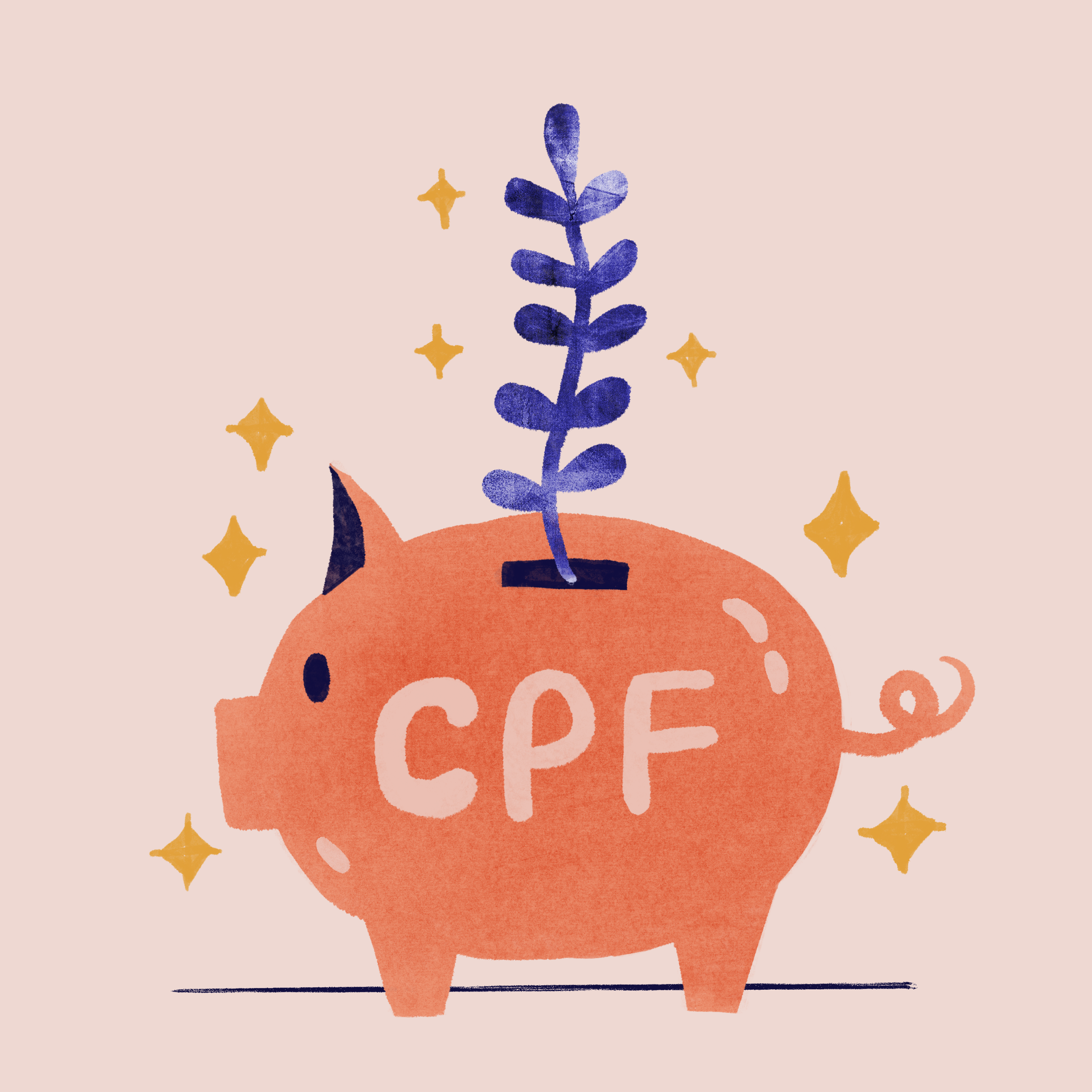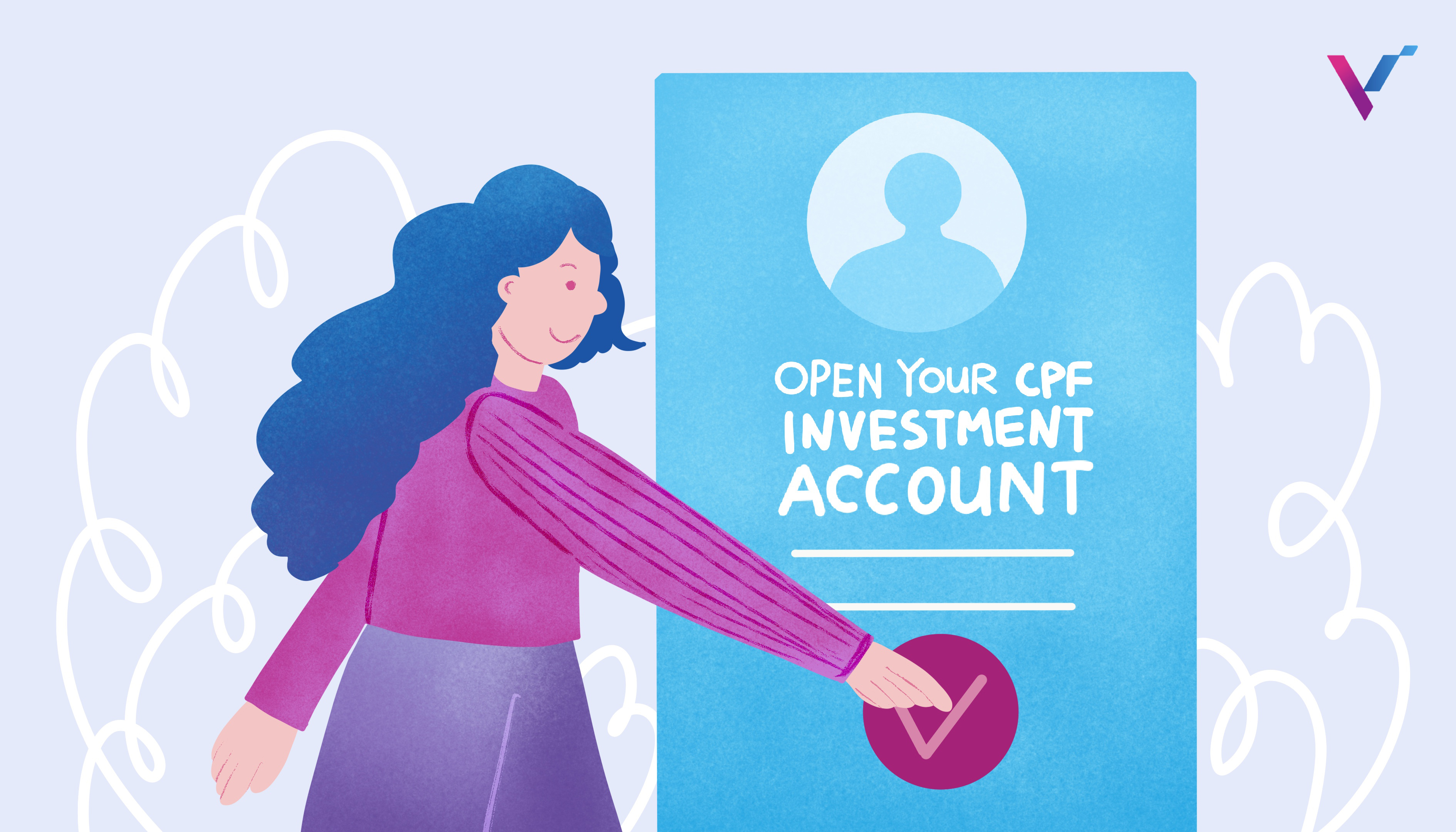Investing with CPF: All You Need to Know
01 Jul 2021

Curious about investing using your CPF? You’ve probably heard about it from your friends or relatives and want to do the same.
The social security system in Singapore is highly defined by the Central Provident Fund (CPF). Singapore Citizens and Permanent Residents are given a chance to build a good nest egg through an option to invest with CPF.
While we highly suggest you don’t touch your CPF money to invest when you don’t have adequate knowledge about investments, we want to support you by answering the most frequently asked questions from people like yourself interested to explore investing with CPF.
What is CPFIS?
Your CPF is not just a simple pension plan. In case you aren’t aware, you have four CPF accounts: OA (Ordinary Account), SA (Special Account), MA (MediSave Account), and RA (Retirement Account).
The CPF Investment Scheme (CPFIS) provides us with an opportunity to invest our CPF money and grow our nest egg even bigger, especially when done correctly. Under this scheme, you can choose to put your money in investment vehicles like unit trusts, annuities, treasury bills, bonds, fixed deposits, exchange-traded funds (ETFs), gold ETFs, and shares or stocks.
Remember, however, that under the CPFIS, you cannot withdraw any investment returns until you’re 55. So whenever you make a profit or get dividend payouts from investing your CPF, your investment plus profits and/or dividends will be returned to your account.
Why invest with CPF?
Investing your CPF is good provided you are confident you’ll make money from it. Your CPF, even if you don’t invest it in stocks, bonds, or gold, earns an interest of at least 2.5 to at most 4 per cent per annum. This is risk-free. Hence, it’s best to leave it where it is if you don’t have enough knowledge of investing.
But if you know how to invest and are confident you’ll make higher returns, then by all means you can touch your CPF money. It’s all yours anyway.
What attracts most people to invest their CPF money is the potential returns they can get – returns higher than what their CPF can give.
Again, your top consideration before you invest your CPF should be your knowledge. Do you know well enough what you’ll be investing in? Are you confident you can make higher returns in investing than leaving your money in your account?
In answering the above, remember the fact that your CPF is the foundation of your nest egg. Whether you retire comfortably or otherwise will depend on what you decide to do with your CPF.
Don’t take it, however, as though we are discouraging you from investing your CPF. We only want you to remember that investing has its risks. Like we always tell our VI College graduates, only invest in something if you know how to do it properly.
Perhaps you’re curious why people invest their CPF when they can’t touch any gains they get until after a specific age. Well, here are a few reasons some people still invest with their CPF.
First, you can expect a larger nest egg when you retire, which means you can provide for your recreational needs once you stop receiving active income. It also means you’re guaranteed to receive a monthly payout to support your daily needs.
You can also use your returns from investing your CPF money to make more investments while you wait for the specified age before you can withdraw from it. Moreover, you can explore using your CPF to make partial or full capital repayment for your HDB.
Any prerequisites in investing with CPF?
Before the CPF Board allow you to invest your CPF in stocks, you need to meet these criteria:
- You have to be at least 18 years old and not an undischarged bankrupt.
- You have to have more than $20,000 in your OA and more than $40,000 in your SA. The $20,000 and $40,000 are funds in your CPF that you cannot touch for investment purposes.
- You have to take the Self-Awareness Questionnaire (SAQ) to gauge whether you have good investment knowledge.
Where to invest your CPF?

Investing using your CPFIS-OA and CPFIS-SA are not the same. To be fair, the CPF Board has the members’ safety in mind when it planned this scheme. Why do we say so?
The list of investment options that you can invest your CPF savings in is controlled. For instance, you cannot invest all your CPF money into what are considered high-risk investment vehicles.
See also: Low-Risk Investment in Singapore – Do They Exist?
Hence, you can only invest up to 35% of your investible savings from your OA account in corporate bonds, shares or stocks, and property funds. You cannot, however, use your SA account to invest in the aforementioned options. Plus, if you invest in shares, for example, you can only choose from a selected list of stocks approved by the board.
Moreover, even though you’re allowed to invest your OA and SA into ETFs and unit trusts, you cannot touch the higher-risk ETFs and unit trusts with your SA.
Relatively speaking, these restrictions are your defensive net that the board thinks will secure your money despite the market volatility and risks presented by investment options available today.
Which CPF account can be used for investment?
You can invest your CPF under the CPFIS or the Special Discounted Shares (SDS) Scheme. We’ll focus on the CPFIS which allows you to invest two of your CPF accounts: OA and SA.
How much of your CPF OA can you invest?
You cannot invest all the money in your OA account in whatever investment vehicle you want. The CPF Board still controls how much you can touch from your money.
Another thing to remember is that your CPF OA can be used to pay for your property. Although even if this is the case, remember to still set aside some savings for either future mortgage or for gaining more interest.
The CPF Board only allows you to invest whatever you have left in your OA account after setting aside $20,000. Hence, if you currently have $60,000 in your OA, you can invest at most $40,000. If you have $40,000 in your CPF OA, then you’re allowed to invest $20,000.
You may also check the amount via the CPF portal using your Singpass. Just go to My CPF Online Services > My CPF > My Dashboards > Investment. Or you can just open your CPF Mobile App and go to My Investment.
Still, there’s such a thing as investible savings, which the CPF Board uses to limit how much you can put into certain investment options. Investible savings is your total OA balance and any amount you have withdrawn for investment and education.
You’re allowed to invest only up to 35% of your investible savings in stocks or shares, and 10% of your investible savings in gold.
If you have a $60,000 OA balance and you have previously withdrawn $10,000 for investment and $10,000 for education, your investible savings is $80,000. This means you can invest $28,000 in stocks and $8,000 in gold.
Can CPF invest in ETFs?
Yes, you can invest your CPF in exchange-traded funds or ETFs. Under the CPFIS, you’re allowed to invest your OA in ETFs. As of date of writing, the ETFs you can invest in using your CPF are the following:
- ABF Singapore Bond Index Fund
- Nikko AM SGD Investment Grade Corporate Bond ETF
- Nikko AM Singapore STI ETF
- NikkoAM-StraitsTrading Asia ex Japan REIT ETF
- SPDR Gold Shares
- SPDR Straits Times Index ETF
To check how the CPF Board determines which ETFs will be included in the CPFIS, go to this link.
Can I use CPF to buy gold?
You can use your CPF to buy gold provided you fulfil the criteria stipulated by the CPF Board. One criterion is you can only invest a maximum of 10% of your investible savings (your CPF account balance plus any amount you’ve withdrawn for education or investment) in gold ETFs and other gold products, including gold certificates, physical gold, and gold savings accounts.
For gold ETFs, only the SPDR Gold Shares is included. For gold products, you would need to check with UOB.
Can I invest in S&P500 using CPF?
Previously, you cannot invest in the S&P500 using your CPF. Recently, however, a few robo-advisors in Singapore have opened up the possibility to invest your CPF into the S&P500.
Can I use CPF to buy US stocks?
No, the list of stocks under the CPF Investment Scheme does not include US stocks. One of the criteria that the CPF Board put into place for CPFIS is that shares must be traded in Singapore dollars and offered by a company incorporated in Singapore.
Should you wish to invest in US stocks, you can explore investing using your own cash. Here’s where you can find CPF-included stocks.
How can I get CPF Investment Account?

Your CPF Investment Account (CPFIA) is needed before you can start investing your CPF, for example in stocks and bonds. You only need to open a CPFIA if you’re using your CPF OA to invest. If you’re using your CPF SA, you don’t need a CPFIA.
You can open a CPF investment account with your bank in Singapore. Currently, the CPF Board has approved three banks to facilitate opening a CPFIA. These are DBS, UOB, and OCBC. You can apply to open a CPF investment account in any of these banks via an online transaction or through visiting any of their branches.
How to open a CPF Investment Account with DBS, UOB, or OCBC
If you’re already decided and confident to invest your CPF, you need to do two things.
First is to open a CPF investment account with any of the three approved banks in Singapore. These are either DBS, UOB, or OCBC. Hence, if you’re an existing account holder in DBS, it makes sense to open your CPF investment account with this same bank as well.
Opening a CPF investment account with UOB, DBS, or OCBC is easy. You can do it through a face-to-face transaction by visiting the nearest branch to you or apply to open an account online. You’ll need your CPF statement to proceed, and the application process typically takes 7 to 10 business days.
Do note, however, that the above first step is needed only if you’re investing with your OA. So should you wish to invest in shares, bonds, or ETFs, having a CPF investment account is a requirement.
On the other hand, investing using your SA doesn’t require you to do the above. You can just proceed to the second step which is to open an investment brokerage account.
Your investment brokerage account will be the tool where you can actually invest the money. The CPF investment account with your bank will only manage the funds. To check which brokerages are eligible for CPFIS, download this list.
How to top up my CPF Investment Account?
You can’t top up your CPF investment account if you don’t have enough CPF savings to invest. You can only do top-ups when taking up entitlements or conversion of entitlements, in which case you can liaise with your bank.
Can I close my CPF Investment Account?
You can close your CPF investment account after you’ve sold all your investments. After doing so, you can instruct your bank to close your CPFIA. Should you have any remaining cash balance in your CPFIA, it will be refunded to your CPF OA.
We hope we have covered all your questions on investing with your CPF. Remember to equip yourself first with relevant knowledge before you proceed to touch your CPF money.
We can help you to learn the basics of stock investment through this free bootcamp. Just click here to register.
DISCLAIMER
This article and its contents are provided for information purposes only and do not constitute a recommendation to purchase or sell securities of any of the companies or investments herein described. It is not intended to amount to financial advice on which you should rely.
No representations, warranties, or guarantees, whether expressed or implied, made to the contents in the article is accurate, complete, or up-to-date. Past performance is not indicative nor a guarantee of future returns.
We, 8VI Global Pte Ltd, disclaim any responsibility for any liability, loss, or risk or otherwise, which is incurred as a consequence, directly or indirectly, from the use and application of any of the contents of the article.
